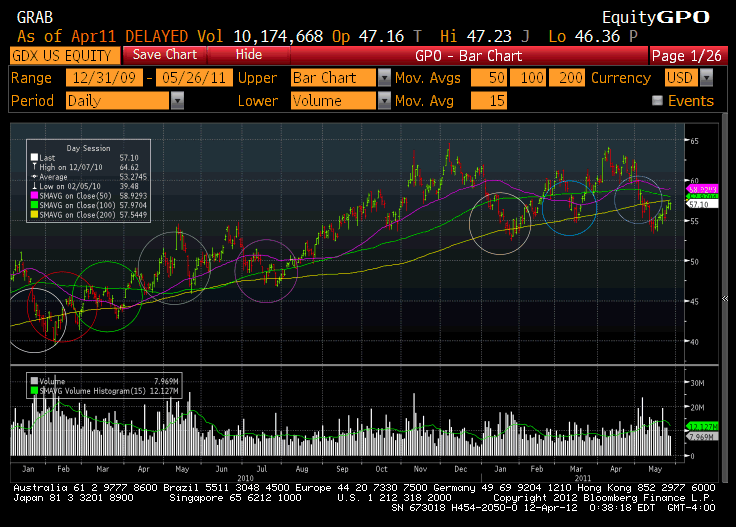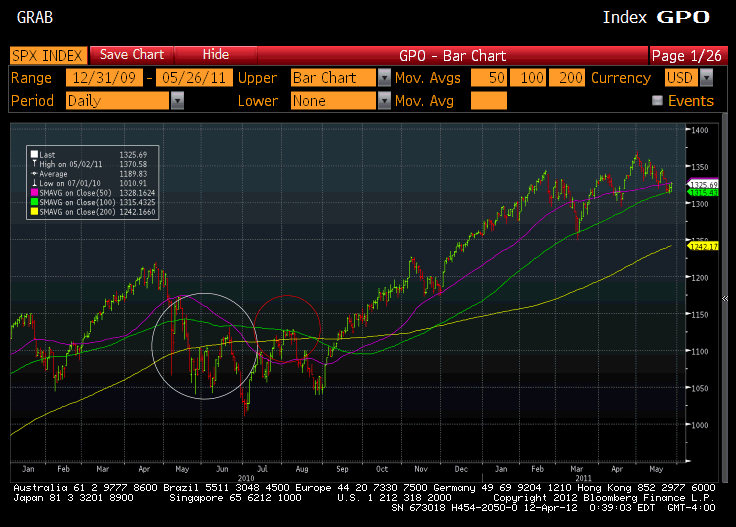There is a tide in the affairs of men, which taken at the flood, leads on to fortune. Omitted, all the voyage of their life is bound in shallows and in miseries. On such a full sea are we now afloat. And we must take the current when it serves, or lose our ventures.
– Brutus in William Shakespeare’s Julius Caesar
I was born for the storm and a calm does not suit me.
– Andrew Jackson
Risk Redefined
I remember the first time I saw someone us the terms “risk on” and “risk off” as a way to describe the flow of capital into and out of certain baskets of assets that are supposedly “risky” or “safe.” The terms got under my skin back then and they continue to do so until this day. Wall Street and the media just love coming up with trite and untruthful statements as a way to condition investor behavior and ultimately separate you from your money. First of all, the world and the successful deployment of capital is much more complicated over any serious investment horizon than the simplification of everything into “risk on” and “risk off.” This way of thinking is even more dangerous when conventional wisdom allocates to the “risky” category many items that are in reality the true safe havens and to the “safe” category those that are guaranteed to destroy your financial well being.
According to “conventional wisdom” (I wrote a thousand words on conventional wisdom here http://www.zerohedge.com/article/michael-krieger-last-dance) equities and commodities as a group are “risky” and fixed income generally but treasuries and the dollar in particular are “safe.” Seriously, this really is what people think. So why do people think this? Mainly because the economic central planners want it to be this way and they have done everything in their power to make the market act that way on a regular basis via manipulation.
Ok, so this brings us to the next question. If the market behaves that way then isn’t it true? Well yes and no. There is a reason I have made the choices I have in the last few years and why I manage capital the way I do. I can see a sinking ship a million miles away and Wall Street and Washington D.C. are collectively the biggest train wreck in motion I have ever witnessed. As I wrote about last week, since government will do anything to survive one of the “tools” they use is to make you think 2+2=5 so that you do the legwork for them. Lenin is said to have called such people “useful idiots.” Treasuries are safe and gold is a risk asset. Glad I got the memo!
Now, as long as the central planners have some degree of control of the markets, which they still do at the moment, if you are playing the game and managing money in this world of investment horizons of weeks if not days you have no choice but to trade the market you are given. Nevertheless, as I have said countless times before, in the final equation there will be no other asset that will lose investors more money that U.S. government bonds and nothing that will protect wealth more than gold. Moreover, when the central planners do lose control of the markets (and they most certainly will) the fact that they have spent so much time manipulating them as well as pushing investors into the worst types of capital allocation decisions they could make, guarantees the total wreckage of the life’s savings of most of this nation.
People tend to think that they will be able to “react” when the time comes. I promise you one thing you will not be able to react. The central planners have doubled down and tripled down and quadrupled down which means that when the top blows off on this thing it will unravel quicker than anyone can imagine. You will merely stand frozen in front of your screens in total awe wondering what your next job will be. You and your investors will both be finished. Many also think, oh well it won’t happen for 5-10 years at the earliest. This is also wrong. Everything is already in place. It could be tomorrow or it could be next year but it is coming a lot sooner than you think and will be a lot faster than you ever thought possible.
Gold Miners Test the 200 dma Consistently and the S&P500 Never Does…Hmmm
The number one strategy being employed at the moment to keep people out of assets that are actually safe (mainly precious metals, oil and food) is outsized volatility. In order to demonstrate this point let’s take a look at the chart of the GDX and then a chart of the S&P500.
GDX Chart Since December 31, 2009
In the chart above I have circled the distinct times that the GDX has tested the 200 day moving average (yellow line). Since December 31, 2009 it has done so eight times. Not only that, notice how closely it trends to the line and just the overall tremendous volatility. This is for an index of companies that mine what is the best performing asset on a consistent basis for the past decade. It is also for an ETF that hit a record high earlier this year! Ok, so with that in mind let’s look at the chart of the S&P500 over the same time frame.
S&P500 Chart Since December 31, 2009
Well look at that. This index tested the 200 dma on a total of two occasions and both of them were really related to the “Flash Crash” last spring/summer when the authorities briefly lost control and then promptly initiated QE2. They learned their lesson. Make the market go up steadily, with little volatility while making sure the true safe havens (precious metals) experience unbearable volatility and keep people consistently afraid of a crash to slow down the inevitable flow into these assets. I mean, with all the things going on in the world this year the SPX never even came CLOSE to testing its 200 dma and the GDX did it three times. Come on! The whole thing is a painted picture to separate you from your money. This is the game and if you aren’t thinking for yourself and buying the real safe haven the joke will be on you and unfortunately the investors that foolishly trusted you when you really had no idea what you were doing.
Peace and wisdom,
Mike
Donate bitcoins: 35DBUbbAQHTqbDaAc5mAaN6BqwA2AxuE7G
Follow me on Twitter.




